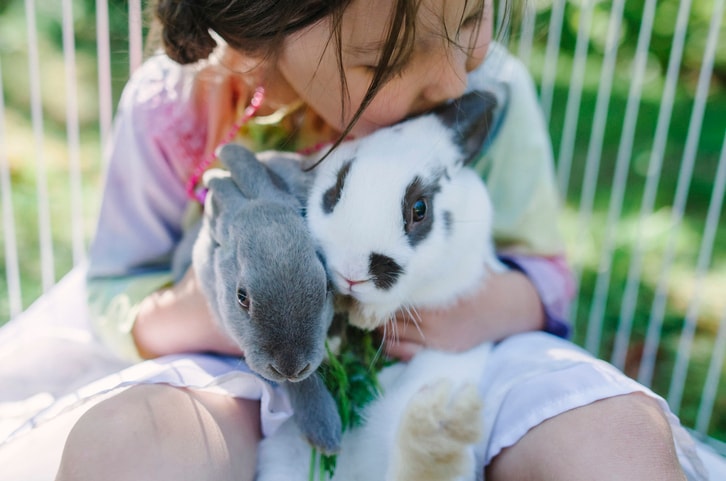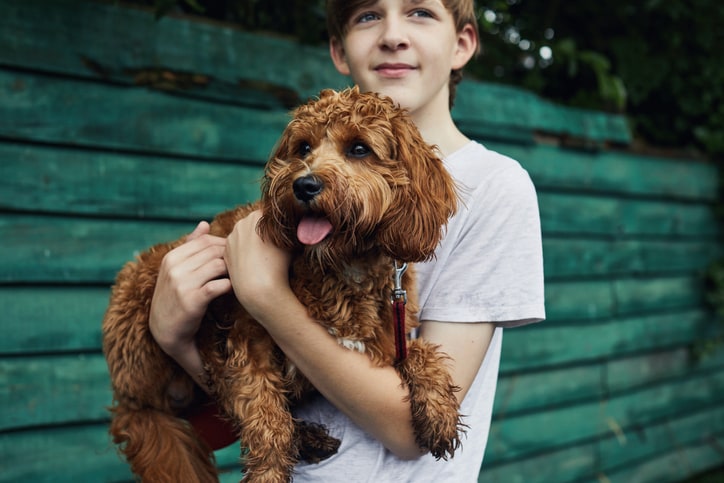Is there nothing in the world your child wants more than a pet? Why not think about getting them one of these small animals that are suitable for children.
A constant companion and a friend to always play with – no wonder so many children crave a pet of their own. Pets can have a positive effect on the personality development of children and strengthen their sense of responsibility.
Which small animal is suitable for your child depends not only on the age of your child, but also on their nature.
Before becoming the proud owners of a small pet, parents should consider exactly which small animal will best suit their family.
In need of pet care? Find pet carers in your neighbourhood with Care.com.
- Guinea pigs and rabbits
Suitable for children from 6 to 8 years
Guinea pigs and rabbits are very tender animals. They can initially seem quite frightened but they quickly become trusting and lose fear of their owner. If you opt for a guinea pig or rabbit, you must have enough feeding and drinking spots in their cage (which should be at least 2m² per animal) or an outdoor enclosure that is regularly cleaned and replenished with food and fresh water.
Ensure that any cables and electrical appliances in your home are always inaccessible to your pets.
Both guinea pigs and rabbits are sociable creatures and should not be left alone. For this reason, it is best to get two of the pets so they can keep each other company. It is wise to get two animals of the same gender to avoid any surprise new arrivals!
- Hamsters
Suitable for children over 10 years
Hamsters are nocturnal which means they are not suitable for small children. Being unexpectedly torn from their sleep by children is not only unhealthy for hamsters, it can cause them to bite too.
Additionally, the average lifespan of a hamster is 1.5-3.5 years which can be tough for children under the age of 10 as they often do not understand the finality of death. Hamsters are more suitable for older children and adolescents.
- Mice
Suitable for children from 8 years
Mice are pack animals that should be kept in at least twos or threes. The cage must provide enough space for the number of mice you have and be equipped with climbing and hiding facilities.
Mice like to keep busy with natural substances so it is advisable to put items such as scraps of paper or pine cones in the cage.
You and your children should not let the small animals run around the room unless they are tame.
Like the guinea pigs and rabbits, choose the same gender to avoid unwanted offspring.
Since the soft fur of guinea pigs, rabbits, hamsters and mice can lead children to cuddle them tightly and carry them around, parents should teach their children how to handle and cuddle the pets without force.
Also, talk to your child to prepare them for the labour-intensive nature of caged pets. For example, the cage will need regular cleaning – a task that often falls to parents.
- Birds
Suitable for children from 8 to 10 years
Is your child pestering you for a feathery friend? If so, it is good to know that these pets also like company so it is best to get at least two.
Make sure your home is suitable to allow the birds to fly around freely.
Budgerigars and canaries are suitable for children as they are quickly tamed. Nevertheless, birds are not cuddly animals to play with so, depending on your child, they might not be the best option. It is also important to note that budgerigars can live up to 12 years.
- Fish
Suitable for children over 10 years
Is a member of your family allergic to pet hair? If so, an aquarium with fish and plants is a nice alternative. Watching the aquarium can also be very relaxing and soothing for children. From the age of 10, children have enough patience to take care of fish.
However, it is important to note that the cuddle factor is missing here.
Our article provides a general overview and should help parents with the purchase of a pet. Of course, each family should decide for itself which animal is best suited to them.
Read Next: Thinking About Getting a Family Dog? Here Are 7 Reasons Why You Should

